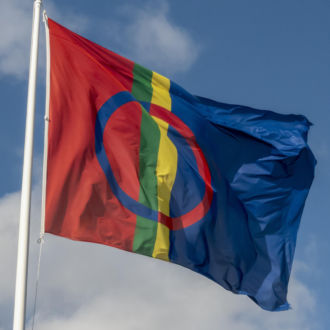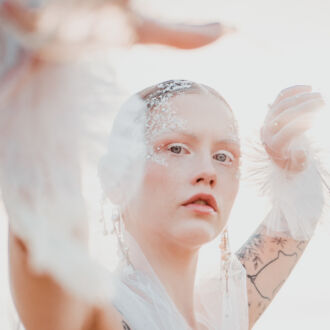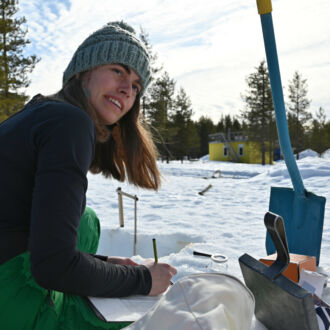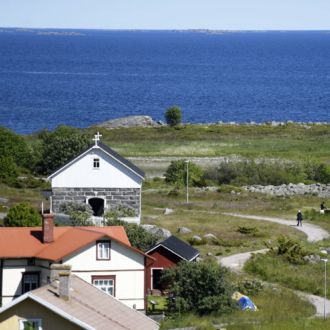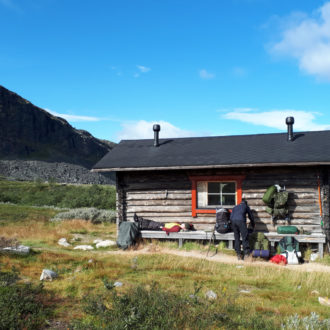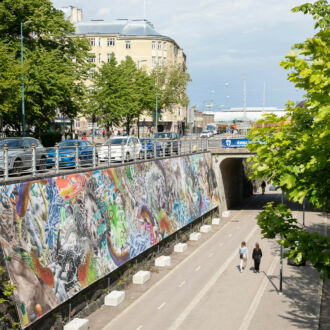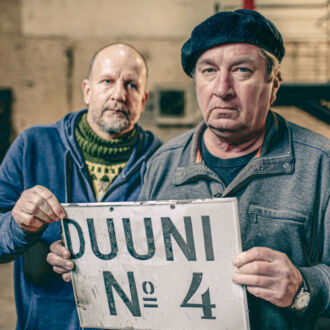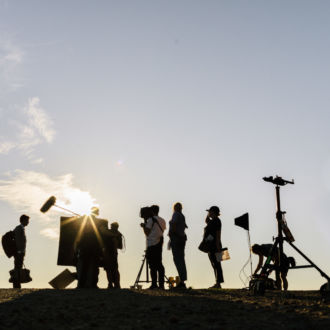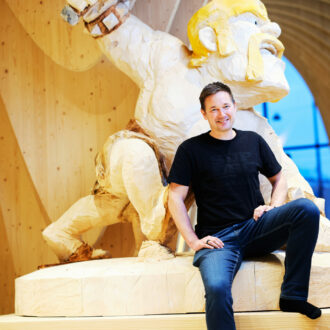“These three artists came immediately to mind,” says Auri Ahola. She’s speaking about how she decided who would appear in her short documentary film Bálggis, which contains three portraits of about five minutes each.
Each of the three people, like Ahola herself, is a Sámi artist. The Sámi are the only recognised Indigenous People in the EU area. Their northern homeland, called Sápmi, is divided into four parts by the borders of the nation-states Finland, Sweden, Norway and Russia.
The artists in the film work in fields outside the mainstream art world: Aleksi Niittyvuopio is a circus artist and juggler, Sunna Kitti is an illustrator who creates graphic novels, and Sámi Hustler is a graffiti artist (the name is a pseudonym). Ahola used to dance in the Finnish National Ballet and is now a Sámi regional artist at Arts Promotion Centre Finland, where she plans and leads projects that support and highlight Sámi culture.
Bálggis means “path” in Northern Sámi, one of fewer than ten surviving Sámi languages. The film portrays its subjects’ connections to the rugged, expansive landscapes of northern Finland. Although all three artists now live in southern Finnish cities, Ahola brings them to Sápmi, to areas linked to their childhoods and their heritage. In the process, they describe the paths they have taken.
Moving objects

From left: Sámi Hustler, Sunna Kitti, Auri Ahola and Aleksi Niittyvuopio gathered in the far northern town of Inari for the premiere of the documentary film Bálggis.Photo: Peter Marten
As the film opens, we get to glimpse each of the three wandering through northern terrain of peaks, rivers and forests. Then we see them in action as they tell their stories one by one, starting with Niittyvuopio.
One side of his family comes from near Karigasniemi, on the far northern border between Finland and Norway, but he grew up in the south, and lives in the city of Tampere in western central Finland.
“I’m always fascinated by thinking about how an object would like to move,” his voice says as we see him spinning and juggling clubs in a mountainous setting, so far above the tree line that the only vegetation is small plants that hug the ground.
“Something tangible that I’ve incorporated into my own work from Sámi culture is reindeer antlers,” he says. He carefully rotates and balances enormous antlers, looking for a way he might use them in a routine.
Shining a spotlight
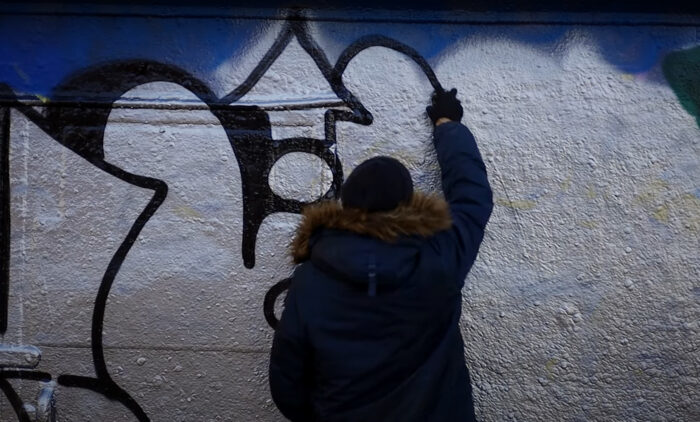
Sámi Hustler creates graffiti in a former industrial area in Helsinki.Still photo from the film Bálggis
Sámi Hustler wears a ski mask on camera to protect his identity. We see him visiting a remote fishing shack on the Näätämö River up north. Then the scene abruptly shifts to Helsinki, to nocturnal shots of Central Railway Station and of traffic rumbling up Häme Road.
We watch him create works of graffiti while he tells his story in a voiceover. “I deal with Sámi language and culture in my art, and I want to highlight it,” he says.
He tries to “address some of the issues and discrimination faced by Sámi people.” For instance, his mother was punished in school for speaking Sámi – an unfortunately familiar story in Finland as late as the 1970s. “I try to touch on all the topical issues and shine a spotlight on them,” he says.
Escapist storyteller
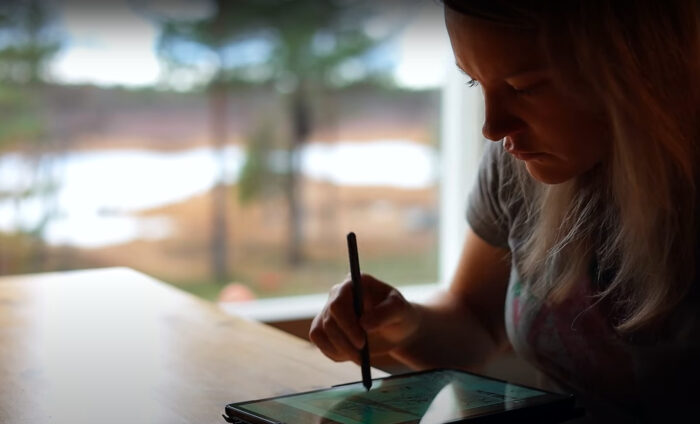
Sunna Kitti draws graphic novels that take place in other worlds.Still photo from the film Bálggis
Comic book artist Sunna Kitti grew up in Tirro in the far north and now lives about 1,200 kilometres (750 miles) away in Turku, a city on the southwestern coast of Finland. “I’m a bit of an escapist storyteller,” we hear her say over views of her walking in the woods and riding her bike down a forest road. “I like stories about travelling to other worlds.”
We see her drawing in her notebook in the forest beside a body of water, and later on an iPad at a kitchen table. “This environment is a place for me where I can immerse myself in my own thoughts,” she says of Tirro.
All three artists express similar notions of revisiting their roots, replenishing their energy and gathering inspiration when they travel to Sápmi.
Different paths, different techniques
Watch Bálggis, a short documentary film directed by Auri Ahola. (English subtitles are available – if they are not visible, check the settings on the video.)Video: Auri Ahola/Arts Promotion Centre Finland
Ahola and the subjects of her film appeared onstage for a question and answer session at the premiere of Bálggis, in Inari, a town in the far north. The event took place at Siida, a nature centre and museum of Sámi culture. On the same weekend, the Indigenous music festival Ijahis Idja (Nightless Night) was taking place just across the river at Sajos, the Sámi cultural centre.
“They all represent marginal art forms that are also pretty unusual within Sámi culture,” said Ahola of the artists in the film. “They use their cultural tradition while making art with modern knowledge and technology.”
Among the documentary’s descriptions of how inventive the artists are in their approaches, one thing especially caught my notice: Niittyvuopio’s mention of “thinking about how an object would like to move” when searching for objects he can use in a show. “That’s something I’m processing all the time,” he told the audience in Inari. “You may come across an object unexpectedly.
“For an everyday object, like a towel, let’s say, I start thinking about what you can do with a towel, and what you can do with it that you can’t do with other objects. How can you adapt it for tricks and manoeuvres? Then I start finding different paths, different techniques for that object.”
While each of the artists in Bálggis has their own techniques and paths, Ahola believes we’re going to hear more about all of them. “This film won’t be the last thing,” she said.
By Peter Marten, September 2023
